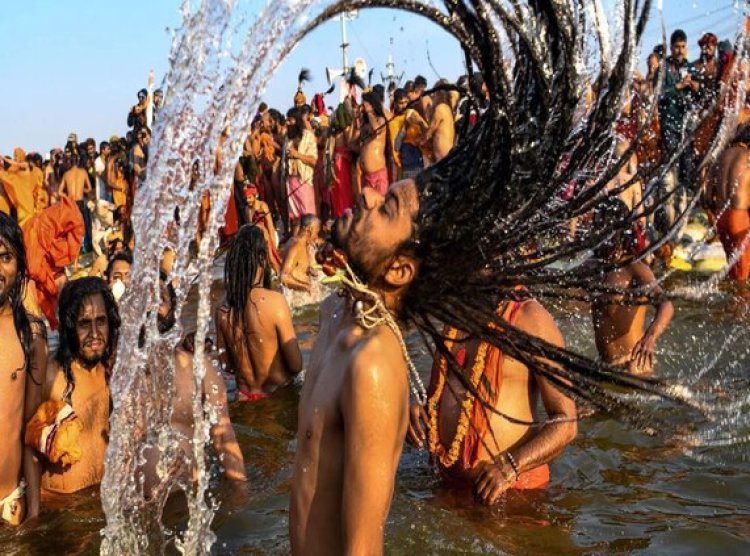Maha Kumbh Mela 2025: Spiritual Gathering Meets Marketing Goldmine
Maha Kumbh Mela 2025: World’s largest gathering offers unmatched opportunities for brands to connect, inspire, and gain nationwide visibility through creative strategies and emotional engagement

Every 12 years, the Maha Kumbh Mela attracts Hindus worldwide to Prayagraj, creating the world’s largest human gathering. This mega event presents an unmatched opportunity for brands to gain visibility among a diverse and massive audience.
Beginning January 13, 2025, millions will gather over 45 days at the holy confluence of the Ganga, Yamuna, and Saraswati rivers to take a sacred dip. Brands are set to capitalize on this extraordinary gathering, which draws an estimated 40–45 crore attendees, equating to nearly one-third of India’s population.
Diverse Audience with Regional and Urban Reach
While the event predominantly attracts middle- and lower-middle-class devotees, it also sees significant participation from urban dwellers in metro cities and tier-1 and tier-2 regions like Lucknow, Kanpur, and Prayagraj.
Massive Branding Investments
An Economic Times report highlights that over ₹3,000 crore will be spent on advertising and marketing. Brands can partner with official facilitators like Vritti Solutions and Crayons Advertising to secure exclusive visibility via LED displays, hoardings, and barricades. Collaborations with government bodies to provide amenities such as water ATMs and changing rooms further enhance brand presence.
Budgets for participation start at ₹5 lakh and can go up to ₹1 crore, with cost-effective strategies like LED screens ensuring a low cost per contact (5–10 paise), according to Rajesh Radhakrishnan, CMO of Mindwave Media.
Emotional Over Transactional Appeal
The focus at the Maha Kumbh Mela is not immediate sales but creating emotional connections. Offering value-added services like charging stations or accommodations builds goodwill, positioning brands as trustworthy life-enhancing partners.
Creativity as a Differentiator
To stand out, brands must employ innovative ideas. For instance, Lifebuoy’s “roti campaign” during a past Kumbh Mela deeply resonated with attendees by combining creativity with relevance.
“Success hinges on a strong creative concept,” says Ravikant Banka, MD of Eggfirst Advertising. However, Banka notes that regional players might struggle, as the broad audience favors brands with a national footprint.
Execution Challenges and Cultural Sensitivity
Executing campaigns at this scale is complex. Success measurement is challenging due to the lack of direct sales links, notes Shankar Shinde, co-founder of Aisles & Shelves. Additionally, cultural sensitivity is critical, as missteps can provoke backlash.
Industry Leaders and Key Players
FMCG, BFSI, infrastructure, and auto brands lead the marketing spend, while startups and fintech players focus on financial literacy campaigns. Healthcare and technology sectors use the event for product testing and goodwill-building initiatives.
Offline and Digital Synergy
Integrating offline engagement with digital storytelling amplifies reach. Emotional stories created at the Kumbh Mela provide rich content for online campaigns targeting tier-2, tier-3, and rural audiences, says Banka.
Ultimately, the Maha Kumbh Mela is more than a spiritual gathering. With creative strategies, strategic planning, and cultural sensitivity, brands can establish lasting impressions, build goodwill, and achieve nationwide visibility.

 sheetal
sheetal 










